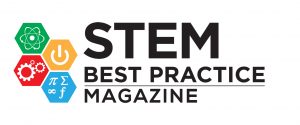Meet Daunaree Jackson, MS/HS Visual Arts Teacher from Al Yasat Private School, Abu Dhabi
 I am a passionate Visual Arts teacher with 4.5 years of experience in the UAE. I hold a Bachelors Degree in Art Education from the Edna Manley College of the Visual and Performing Arts in Jamaica, specializing in Ceramics and Printmaking.
I am a passionate Visual Arts teacher with 4.5 years of experience in the UAE. I hold a Bachelors Degree in Art Education from the Edna Manley College of the Visual and Performing Arts in Jamaica, specializing in Ceramics and Printmaking.
My core belief is to foster a dynamic and creative environment where students are encouraged to exceed their own expectations. Through guidance, counseling, and discipline, I strive to nurture their artistic talents and personal growth. Teaching art is not just a job for me; it’s my passion.
1. How do you incorporate STEM principles into your art curriculum, and what strategies do you use to highlight the connections between the two disciplines?
 In Visual Arts, STEM has offered a powerful tool for enhancing students’ collaborative experience, design thinking, creative thinking, critical thinking, and problem-solving skills through inquiry and project-based learning and exploring real-world applications of art in our daily lives.
In Visual Arts, STEM has offered a powerful tool for enhancing students’ collaborative experience, design thinking, creative thinking, critical thinking, and problem-solving skills through inquiry and project-based learning and exploring real-world applications of art in our daily lives.
Art naturally connects to STEM principles, it plays a key role in my art curriculum by connecting creativity with critical thinking. This allows students to see how art can be both imaginative and analytical while helping them develop skills that are valuable in both artistic and technical fields. It makes learning more dynamic and prepares my students for the world where creativity and technology often intersect.
2. Can you share an example of a project where students used artistic techniques to explore or communicate STEM concepts? What were the outcomes?

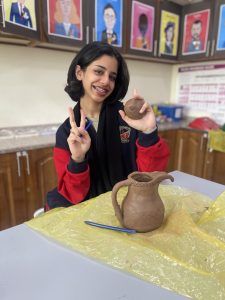
Students were challenged by a product development project where they had to create sustainable packaging for a date-based product called “The SeVen.” They explored design techniques using graphic software and applications to develop visually appealing and functional packaging while applying science and engineering concepts, like using sustainable materials.
This project required students to think critically about both the environmental impact and the branding of their product. The outcome was a creative, eco-friendly packaging design that connected art and STEM, showing students how their artistic skills can have real-world applications.
3. How do you encourage students to think critically and creatively when integrating art and STEM into their projects?
I encourage my students to approach their projects as designers or engineers would, by having them go through a process of brainstorming, prototyping, and refining their ideas.
I often ask open-ended questions that require them to reflect on the functionality of their designs and consider how art can solve problems. I emphasize that there is no single “right” answer, which encourages creative thinking. This way, students learn to value experimentation and the iterative process, critical skills in both art and STEM.
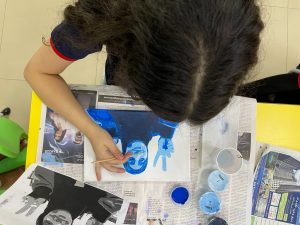
4. In your opinion, what role does art play in enhancing students’ understanding of STEM concepts, and how do you convey this in your teaching?
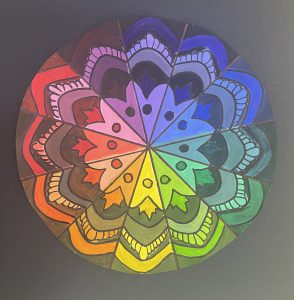
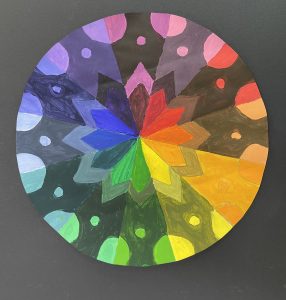
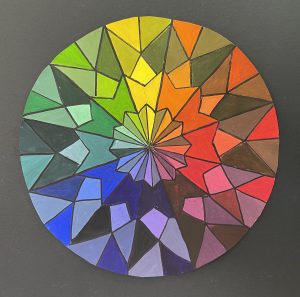
Art plays a key role in making STEM concepts more approachable and engaging for students. It allows them to visualize complex ideas, like geometry in design or symmetry in a creative way. Through hands-on projects, students can explore these concepts while expressing their creativity. I convey this in my teaching by encouraging students to see the connections between what they create and the real-world applications in STEM fields” whether it is by designing and creating sustainable packaging or exploring geometric patterns. Art makes STEM more tangible and exciting!
5. How do you assess student work that combines art and STEM, and what criteria do you use to evaluate their creative and technical skills?
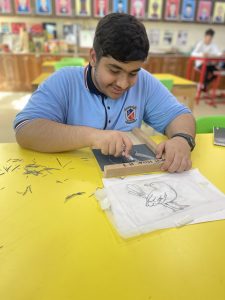 I look for a balance between creativity and technical skills. I evaluate how well they apply artistic techniques, like composition or design, while also checking their understanding of STEM concepts, such as precision in measurements or problem-solving. Assessment usually targets the following tenets
I look for a balance between creativity and technical skills. I evaluate how well they apply artistic techniques, like composition or design, while also checking their understanding of STEM concepts, such as precision in measurements or problem-solving. Assessment usually targets the following tenets
- Technical accuracy: Did the student apply STEM concepts correctly, such as proper measurements?
- Creativity: How original and innovative is their approach? Did they think outside the box?
- Problem-solving: Did they overcome challenges during the project, and how well did they adapt their design or concept?
- Presentation: How well did they communicate their ideas, both visually and in explaining their process?
This way, I can ensure that my students are evaluated on both their artistic expression and their understanding of STEM principles.

